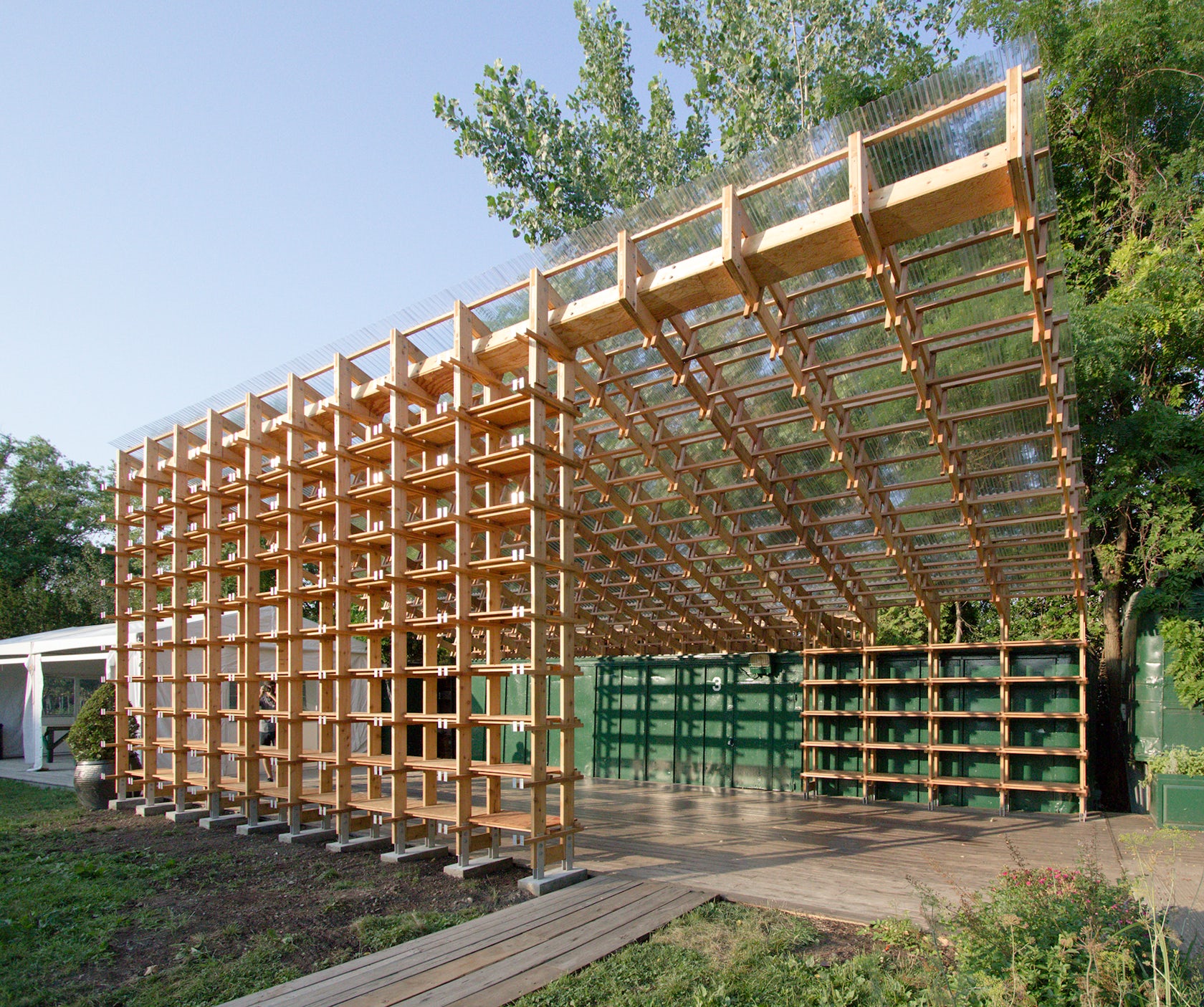Architects: Want to have your project featured? Showcase your work through Architizer and sign up for our inspirational newsletters.
Wooden scaffolding is primarily known for its role in construction, a tool for workers climbing buildings or engineering projects. As a result, scaffolding is an inherently temporary form of architecture, if it is architecture at all. It is more accurately an accessory to architecture, a prelude to future forms. To many, it is an eyesore, covering up the “real” architecture beneath and embodying the harsh noises and foul smells of construction sites.
Yet some architects are exploiting the utility of wooden scaffolding, using it not just to facilitate the construction of architecture, but as a form of architecture in its own right. Their designs benefit from the same advantages that make wooden scaffolding useful for construction in the first place: it is quick and easy to assemble, relatively inexpensive and overwhelmingly versatile, capable of being used in many contexts to make a variety of forms.
Some of the projects on this list stay true to the use of scaffolding as a temporary structure, and its function as a climbable or mountable form of architecture. Other projects are more subversive, using scaffolding to create permanent structures, or forms that are primarily decorative. Yet all of the projects challenge perceptions of scaffolding as a symbol of architecture, or distraction from it, with works that suggest the great potential of this neglected craft.

© Mailītis A.I.I.M.

© Mailītis A.I.I.M.

© Mailītis A.I.I.M.
Prototype square by Mailitis A.I.I.M., Cēsis, Latvia
Although Prototype square is not an active construction site, its wooden scaffolding is not entirely misleading. The temporary structure is less architecture and more an imitation of architecture, conceived of as a full-scale architectural model for a science and arts center to be built in the same space. Though its size may seem to undermine the very purpose of a model, the unique approach offers unique rewards, by making the process of design a public spectacle and an open dialogue, and by transforming an out-of-use space into a temporary community center.

© Mailītis A.I.I.M.

© Mailītis A.I.I.M.

© Mailītis A.I.I.M.
The Archive by Mailitis A.I.I.M., Cēsis, Latvia
Whereas Prototype square offers an image of the future, The Archive is an intervention of a nearby space intended to document and reimagine the structure that came before it. Wooden scaffolding fills the space of an old brewery, and serves as shelves for fragments of the building left behind. In this sense, the project is a literal archive, but it also transforms the site into a monument of symbolic significance. The surreal fiberglass “cloud” hanging above the scaffolds creates a space of contemplation, prompting visitors to consider more than just the physical remains of the place’s history.

© Hou de Sousa

© Hou de Sousa

© Hou de Sousa
Sticksby Hou de Sousa, New York, N.Y., United States
Sticks also uses wooden scaffolding to reveal the construction and design involved in its making. The public pavilion and educational space was built out of scaffolding to keep the project on a low budget and to make the design as versatile as possible. The project also demonstrates how scaffolding can be a structural element as well as a mounting system. The architects intended for Sticks to be a depository for recycled building materials, which could be placed on the structure as both functional siding and decoration.

© The Open Workshop

© The Open Workshop
Scaffoldia by The Open Workshop, Oakland, Calif., United States
The Open Workshop removes scaffolding from the context of labor and construction, and introduces it to a context of play. Scaffoldia is scaled-down to children’s proportions, and its climbability makes it a natural playground. The project also plays with forms, with a pyramid-shaped exterior that contains an open, domed interior inside.

© Impromptu Projects

© Impromptu Projects

© Impromptu Projects
Treepletsby Impromptu Projects, Macau
The structure of Treeplets is inspired by bamboo scaffolding traditionally used in local Macanese construction. Yet the project transforms this architectural vernacular into a sculpture of monumental proportions. The design is equally influenced by the wooden structures of ancient Chinese buildings; however these inner workings are laid bare without cladding or decoration, making the structure seem fresh and original. As with the other projects, this design is versatile, yet it remains specific to its surroundings through the use of local materials and building techniques.

© Murray Legge Architecture

© Murray Legge Architecture
Lost Pines Chapel by Murray Legge Architecture, Bastrop, Texas, United States
Designed as an outdoor sanctuary for people of all faiths, Lost Pines Chapel is made out of a simple structure of wooden scaffolding that accommodates its diverse program. The project bears no direct lineage to any particular religious architecture, and is instead inspired by the interlocked fingers of hands in prayer or union.

© orizzontale

© orizzontale

© orizzontale
Casa do Quarteirão by Orizzontale, São Miguel Island, Portugal
The design for Casa do Quarteirão was informed by local domestic architecture as well as greenhouse construction. Yet the project differs from both of these sources in its use of bare wooden scaffolding and its placement in the middle of a public thoroughfare. In effect, the structure becomes a house for the street below it, an apt metaphor for a project meant to serve as a space of gathering, a focal point for the local community. Rather than being made vulnerable by its lack of walls, the structure instead projects a hospitable atmosphere on the spaces around it.
Architects: Want to have your project featured? Showcase your work through Architizer and sign up for our inspirational newsletters.




